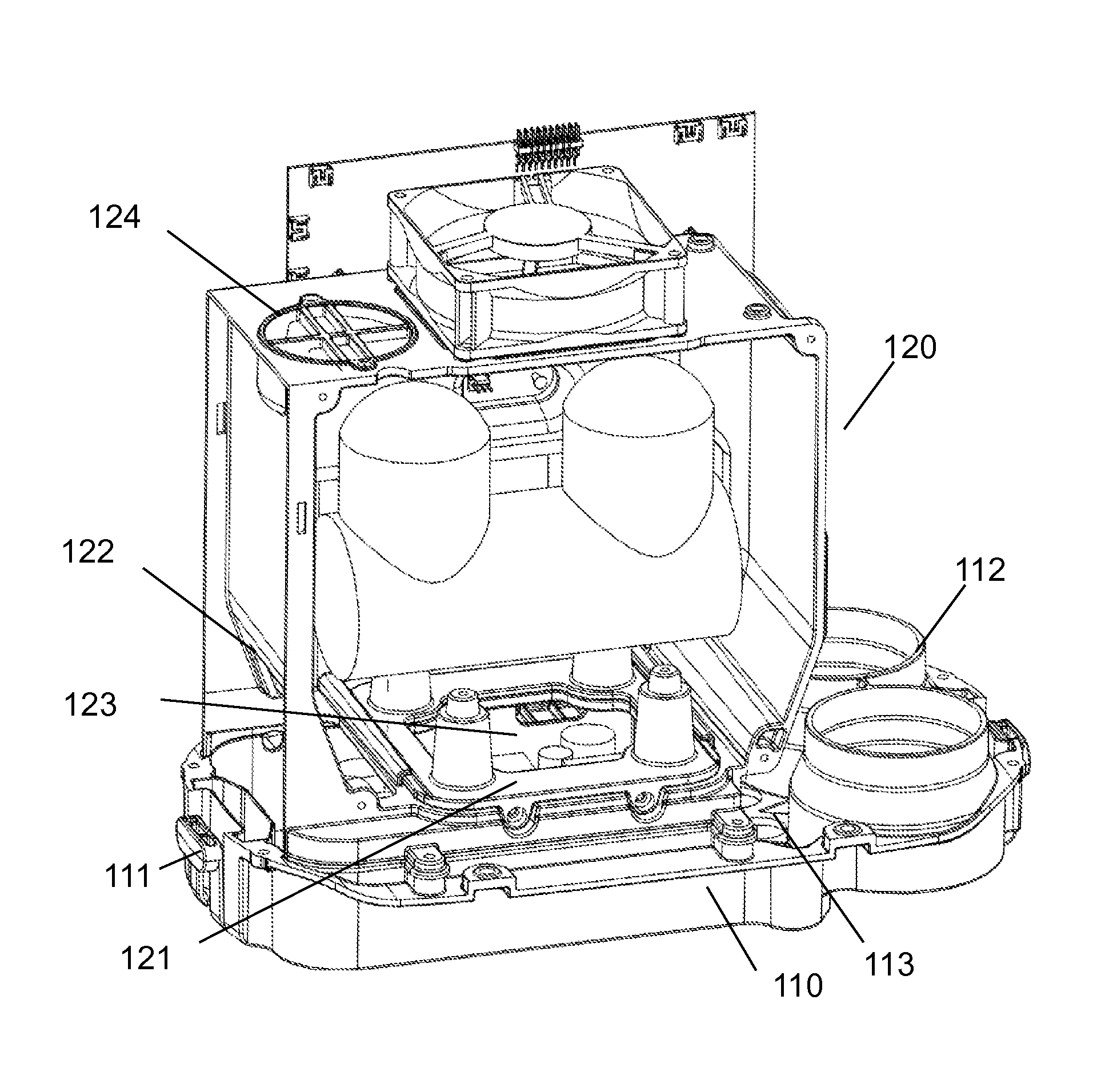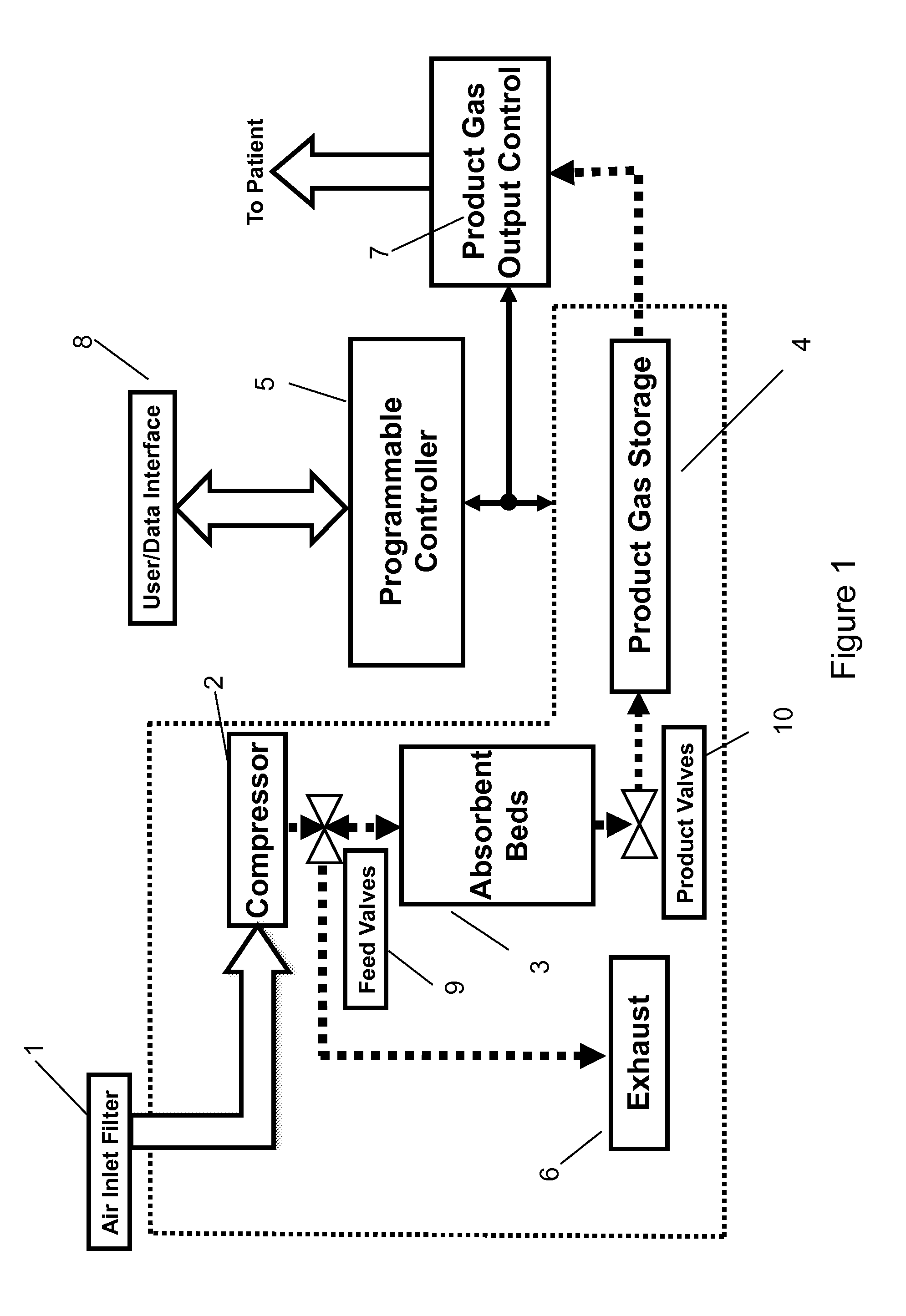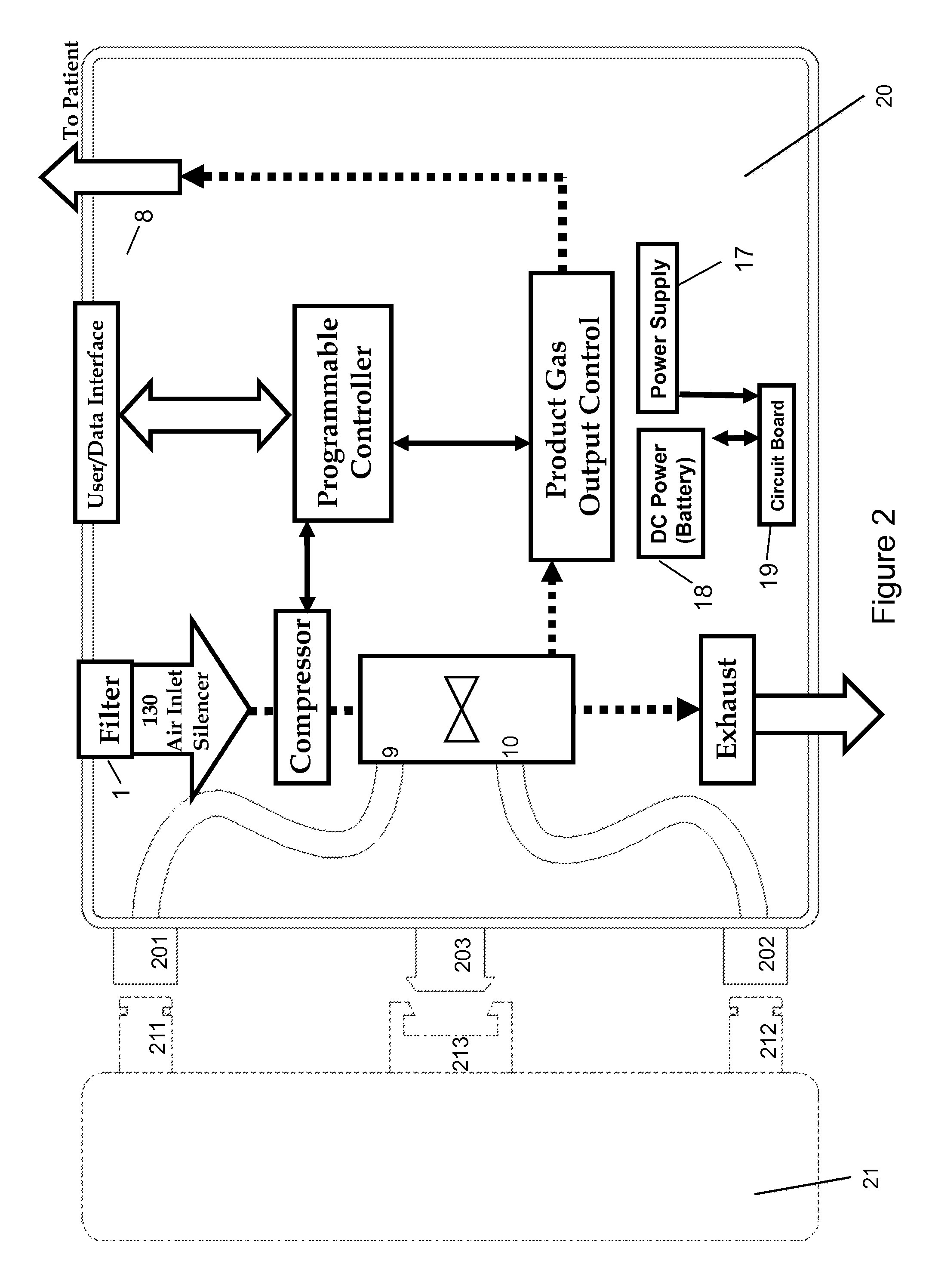Gas Concentrator with Removable Cartridge Adsorbent Beds
a technology of adsorbent beds and concentrators, which is applied in the direction of respirators, separation processes, breathing protection, etc., can solve the problems of inability to move around, inability to adjust the maintenance interval,
- Summary
- Abstract
- Description
- Claims
- Application Information
AI Technical Summary
Benefits of technology
Problems solved by technology
Method used
Image
Examples
Embodiment Construction
[0035]An ideal home stationary concentrator should still be light and compact enough for ease of movement and placement for use by a patient as opposed to a technician or caregiver. This class of equipment should preferably operate reliably for many years without the need for professional service and maintenance. These improved home oxygen concentrators are typically in the range of 10 to 20 lbs and produce from 0.3 to 5.0 LPM of oxygen. A particularly effective embodiment of the invention is an oxygen concentrator where the sieve bed cartridges or adsorbers can be removed and replaced without removing any fasteners or exposing internal operating components. FIG. 2 illustrates an embodiment of an exemplary concentrator suitable for the invention. One skilled in the art will appreciate that the alterations of design elements and arrangement of components from the exemplary design shown are possible to practice the novel elements of the invention. Thus the exemplary design shown is no...
PUM
| Property | Measurement | Unit |
|---|---|---|
| pressure | aaaaa | aaaaa |
| weight | aaaaa | aaaaa |
| weight | aaaaa | aaaaa |
Abstract
Description
Claims
Application Information
 Login to View More
Login to View More - R&D
- Intellectual Property
- Life Sciences
- Materials
- Tech Scout
- Unparalleled Data Quality
- Higher Quality Content
- 60% Fewer Hallucinations
Browse by: Latest US Patents, China's latest patents, Technical Efficacy Thesaurus, Application Domain, Technology Topic, Popular Technical Reports.
© 2025 PatSnap. All rights reserved.Legal|Privacy policy|Modern Slavery Act Transparency Statement|Sitemap|About US| Contact US: help@patsnap.com



